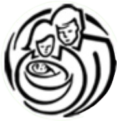What is “Milk Letdown” — the Role of Mind-Body Connection in Breastfeeding
“Waaah Waaah,” instantly a mother may find her shirt drenched with milk. A milk ejection is a triggered forceful letdown of a large quantity of milk. The milk ejection sends a surge of breastmilk from the mammary gland to the baby.
Milk ejection is an effect of the hormone oxytocin. Suction at the breast, either by baby or pump, causes oxytocin to be released from the mother’s posterior pituitary gland. In Nancy Mohrbacher’s book, “Breastfeeding Answers”, she explains the physiology of milk ejection in the following way. Oxytocin attaches to receptors in the mammary gland. Subsequently alveoli in the breast are squeezed triggering the milk ducts to open and release milk. Usually release is simultaneous and symmetrical. Environmental (a baby crying) or emotional (emotions of affection) input can also trigger oxytocin release and subsequently milk ejection. The preparation of getting set up to breastfeed while a baby is showing signals of hunger can trigger oxytocin release. Milk ejection is a learned response and occurs more quickly over time and in some instances without physical stimulation. Several milk ejections are common in each nursing session; the number of milk ejections is positively associated with the amount of milk transferred.
Some women feel milk ejection, but some do not. Descriptions may range from pins and needles, tingling, pressure, or, in some individuals, shooting pain. Other symptoms may occur such as warmth, calm, thirst, nausea, and uterine cramps with associated vaginal bleeding. A longer, slower suck with accompanied swallowing will indicate milk ejection. Many notice a large spray of milk as a sign of milk ejection while pumping.
There are deterrents to milk ejection, such as alcohol consumption, stress, pain, or cold. Relaxation techniques such as deep breathing can be an effective intervention if milk ejection is not occurring as expected.
One rare experience with breastfeeding is dysmorphic milk ejection reflex (D-MER), which can trigger feelings of anxiety, sadness, anger as the breasts fill with milk. The cause is unknown. See the website: d-mer.org for support and helpful suggestions, which often include speaking to a lactation consultant or joining a Facebook group of other mothers also experiencing D-MER.
Contributed by Danielle Chu, RN, BSN, IBCLC
